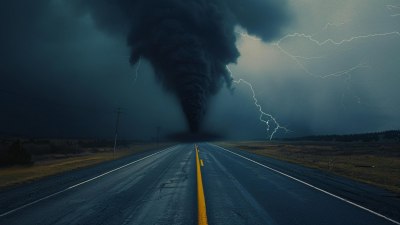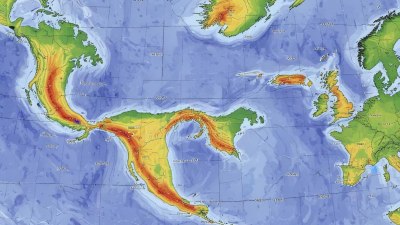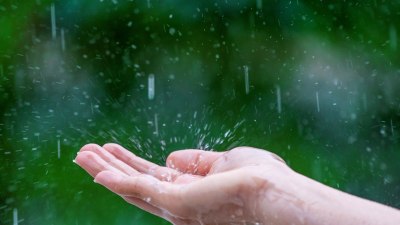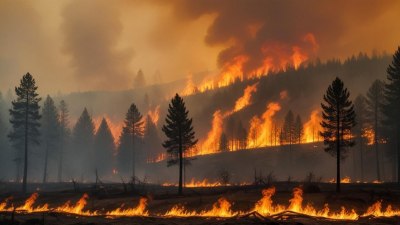How the Moon Affects Earth’s Weather More Than You Think
Discover the surprising ways the Moon influences Earth’s weather and climate patterns.
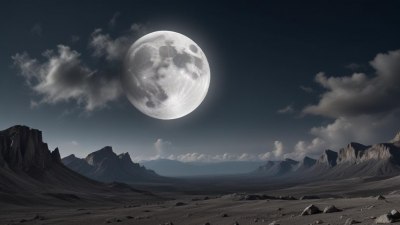
This image was created with the assistance of Freepik
The Moon, Earth's only natural satellite, may seem distant and uninfluential in our day-to-day lives, but its effects on weather and climate patterns are more significant than most people realize. While the Moon is often associated with tides, its gravitational pull and phases can contribute to various weather phenomena that merit exploration. In this article, we delve into how the Moon affects weather on Earth, highlighting the mechanisms behind these influences and their implications.
1. The Moon's Gravitational Influence
One of the most profound impacts the Moon has on Earth is its gravitational pull, which plays a crucial role in the creation of tides. Tides are not only limited to oceans but also affect the atmosphere. The gravitational forces exerted by the Moon can cause variations in atmospheric pressure and can influence local weather patterns. These changes can lead to alterations in wind patterns and precipitation, particularly in coastal regions. For example, as the tide rises and falls, the changes in water levels can lead to localized weather shifts, often creating stronger winds and varying temperatures.
2. Moon Phases and Weather Patterns
The phases of the Moon—new moon, waxing crescent, first quarter, waxing gibbous, full moon, waning gibbous, last quarter, and waning crescent—can have subtle effects on weather patterns. Some research suggests that the new moon phase may correlate with an increase in stormy weather conditions. During full moon phases, there is often an increase in humidity and temperature variations, which can lead to more severe weather phenomena like thunderstorms. This relationship can be attributed to the fact that tidal forces influence not just the oceans but the atmosphere as well, creating conditions that may be ripe for storm development.
3. Lunar Effects on Extreme Weather Events
The Moon’s influence extends into the realm of extreme weather events. Studies have shown that certain natural disasters, such as hurricanes or typhoons, may be more likely to occur during specific lunar phases. This connection is particularly evident as many cyclones are noted to strengthen during the full moon or new moon phases. The gravitational pull of the Moon may enhance atmospheric convection processes, leading to the intensification of storm systems. Although other factors also play significant roles in the formation of these phenomena, the Moon’s contribution cannot be overlooked.
4. Atmospheric Tides and the Role of the Moon
Besides ocean tides, the presence of the Moon leads to atmospheric tides, which are oscillations in the atmosphere that occur roughly twice a day. These atmospheric tides result from the gravitational forces exerted by both the Moon and the Sun. The occurrence of atmospheric tides can influence temperature and pressure distributions, which ultimately play a role in determining daily weather patterns. These interactions can lead to variations in cloud cover, wind patterns, and even precipitation rates. Understanding these tides offers insight into how weather forecasts can be refined based on lunar cycles.
5. Folk Wisdom and Lunar Weather Lore
Throughout history, many cultures have associated weather phenomena with the phases of the Moon, leading to an array of folk wisdom. For instance, farmers have often relied on lunar calendars to dictate planting and harvesting times, believing that certain moon phases promote better yields. Similarly, sailors have respected the Moon’s influence over tides and weather conditions while at sea. Modern science has begun to validate some of these beliefs, as research uncovers the impact of lunar cycles on weather patterns and climate conditions. While scientific understanding continues to evolve, the merging of tradition with modern meteorological science creates a fascinating narrative about the Moon's impact on Earth.
6. Lunar Influence on Natural Climate Patterns
The Moon also plays a critical role in long-term climate patterns. The lunar cycle can affect global climate systems as it influences Earth’s axial tilt, which in turn impacts seasonal weather variations. The Milankovitch cycles, which describe the collective effects of changes in the Earth's movements upon its climate over thousands of years, have a notable lunar component that affects how solar energy is distributed on the planet. Therefore, the Moon can subtly shape Earth's climate over extended periods, influencing factors like glaciation and interglacial periods, which have direct implications for weather patterns.
7. Moon and Weather Prediction Accuracy
As scientists strive to improve weather prediction accuracy, the role of lunar cycles in short-term forecasting is beginning to gain attention. By incorporating the lunar phases into weather models, meteorologists may enhance the precision of forecasts, especially regarding rainfall and storm patterns. Understanding the Moon's subtle influences can lead to more accurate predictions, particularly in regions where lunar cycles align with significant weather events. This approach could prove beneficial in disaster preparedness and response strategies, potentially saving lives and reducing property damage.
8. Indigenous Knowledge and Moon Cycles
Indigenous cultures worldwide have long recognized and respected the relationship between the Moon and the weather. Many tribes have their own unique interpretations of how the lunar cycle interacts with natural phenomena, often noticing correlations between specific moon phases and changes in weather. This knowledge has not only guided agricultural practices but has also fostered a deeper understanding of environmental stewardship. As modern society grapples with climate change and environmental degradation, integrating traditional ecological knowledge with contemporary science could provide valuable insights into maintaining ecological balance.
9. The Moon’s Role in Climate Change Discussions
In the context of climate change, understanding the lunar influences on weather and climate patterns is critical as we seek to predict future trends. While the Moon may not be a direct driver of climate change, its effects on natural systems can amplify certain conditions influenced by climate dynamics. As global temperatures rise and weather patterns shift, recognizing how lunar cycles interact with these changes could lead to more informed environmental policy and adaptation strategies. Future research should continuously evaluate the Moon’s contributions, as scientists aim to piece together the intricate puzzle of climate change and its multifaceted influences.
While the Moon is often overlooked as a potential influencer of weather and climate, its effects are undeniable and should be understood in the broader context of Earth’s natural systems. From tidal influences and atmospheric oscillations to lunar phases affecting storm patterns, the Moon plays a complex and intricate role in shaping our weather. Acknowledging these interactions not only enriches our understanding of meteorology but also fosters a reverence for the natural world around us—one where the movements of celestial bodies have profound effects on our planet. As we continue to study these relationships, society can better prepare for and adapt to the ever-changing climate influenced by myriad factors, including the Moon itself.



